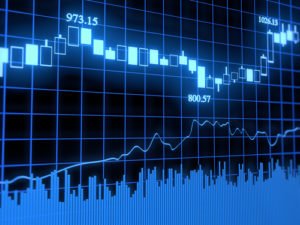Technical Analysis Lessons: Order Flow
Risk disclaimer: I am not a financial advisor, trading involves risk, trade at your own risk, I am not responsible for your losses and profits.
Hello again, this lesson might be one of the most important topic in my tutorials. When we look at our charts and mark our levels the odds of marking out the same level with another trader using the same strategy is quite high. So without further ado lets take a look at this lesson.
Different types of orders:
Market order: Is is the process of buying and selling instrument immediately at the best price available. Market order ensures immediate execution but does not guarantee a specified price. When making a market order the price typically includes the highest bid for sellers and the lowest offer for buyers. Generally market orders are useful if you think a price of an asset is priced right and wanted immediate execution.
Limit order: A limit order is a type of order to buy or sell a stock with a restriction in the maximum price to be paid or the minimum price to be received. When these types of orders are executed it will be at a specified price or better, however these types of orders does not always guarantee execution depending on the order flow of the particular asset. A limit order maybe appropriate if you think you can buy a stock at a price lower than a specific price level or selling higher than a specific price level. Limit orders adds liquidity to the order book as it allows market orders to execute against them. Be careful when using this type of order as your limit order may not be filled and the market may move without you.
Stop Limit Order: A stop limit order is a type of order in the market that a trader can use to protect their position if the market moves against them. Once a stop loss is triggered it becomes a market order and it will trigger only when the specified price is triggered.
Liquidity:
We now know that making a market order takes liquidity from the market and the making a limit order makes liquidity in the market. We discussed earlier about how different traders with the same strategy might have same levels lined out in their charts. Liquidity or liquidity pool refers to orders resting above or below a key support and resistance levels. Having a deeper understanding in liquidity will help you identify what these markets are actually doing. A large order on a particular price levels where a trader may put their stop loss is called order clustering. In this scenario a process called stop loss hunting is performed by the market makers. Price will trade through the stop loss price levels and triggered stop limit orders into market orders, price will move until liquidity demands for those market orders are satisfied. If that scenario is indeed a stop loss hunting and not a break in market structure(to be discussed in future lessons) price will reverse when liquidity conditions improve given liquidity demands have been met, large limit orders being filled during the process of stop hunts or when breakout traders are caught offside forcing to close their positions. We must note that not everything is a stop loss hunt, if your stop loss order gets triggered in these events you might as well develop some new techniques in your trading as well.
That is all for this lesson, I wish you good luck on your analysis also if you enjoyed this lesson leaving a BTC tip is always appreciated: 19qTMkmH53mJBB4rx7ZcKKz3yGuTM6AACz

Your post was upvoted and resteemed on @crypto.defrag